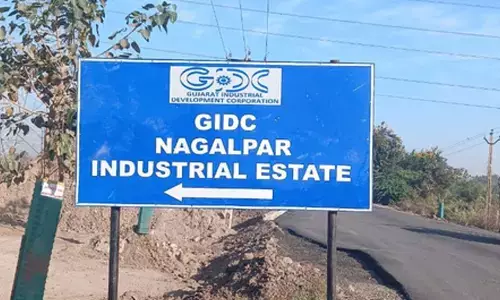Of Climate change, green walls,

Of Climate change, green walls, We live in an urban age and some of the characteristics of an urban sprawl are shortage of land, proliferation high-rise residential and commercial buildings, lack of green space, pollution, etc.
We live in an urban age and some of the characteristics of an urban sprawl are shortage of land, proliferation high-rise residential and commercial buildings, lack of green space, pollution, etc. Today more than 50 percent of humanity lives in cities. The rapid urbanization is found to have negative impacts on the climate, a reason for climate change and diminishing of forests and natural vegetation.
The adverse affects of thermal changes and absence of evapotranspiration (evaporation of water from leaves during plant transpiration through photosynthesis) in urban areas is the cause of rise in urban temperature and energy consumption
Urban heat island’ (UHI) is a concept that has been referred to urban climate change due to changes brought in the urban landscape. Roads, buildings and similar concrete infrastructure adversely replace open vegetation and land. Surfaces hitherto permeable and moist turn into dry and impermeable resulting in urban areas turning warmer compared to their rural environments, creating an ‘island’ of higher temperatures in the surroundings. Because cities emit large quantities of heat, UHI are more widespread in an urban area compared to rural and their impact is far-reaching, affecting humans and ecosystems beyond the cities such as greenhouse effect and global warming.

Whereas natural surfaces have moisture holding soils and vegetation and have the ability to absorb radiation through evapotranspiration and discharge water vapour to cool the air in the surroundings. In recent years, there is great interest in introducing greenery back into cities and utilize the vacant and untapped spaces that are present on buildings’ walls and roofs. This will not only add aesthetic value but will bring enormous environmental benefits, stop the destruction of nature and reduce energy costs. There are three types of high-rise buildings greenery: rooftop gardens, indoor planting and vertical greenery systems. Vertical greenery includes balcony greening, living wall and green facades, roof gardens, etc., and it has the potential to mitigate environmental challenges posed such as pollution and urban heat island impacts.

Instead of air conditioning, erecting a green wall can act as a natural air conditioner by maintaining humidity levels to comfort us. Evapotranspiration can naturally keep air cooled with a green wall.
A green wall is one that can be part of a building or standalone with complete or partial vegetation coverage.
Next Story


















